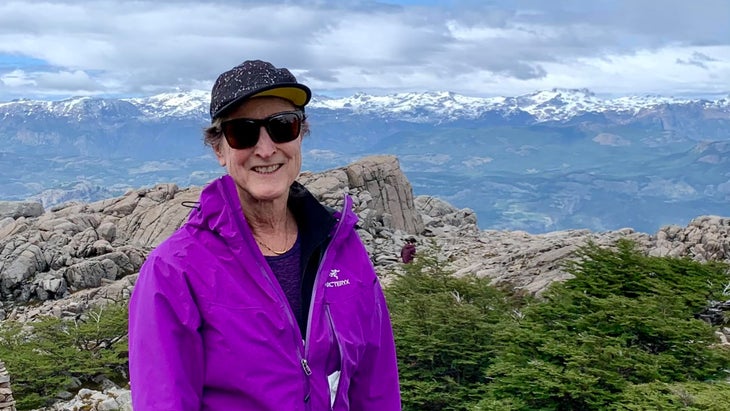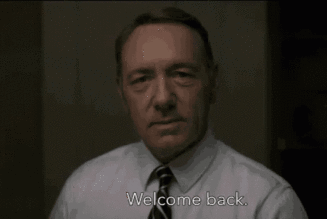Over the years, as a kid and then a climber, I’ve camped a lot, starting in a moldy canvas army pup tent with my friends in the backyard, age 9. Or in tents with classmates on trips to Assateague or Catoctin, in Maryland, where it always seemed to rain and our tents always leaked. Or in my own tent at Miguel’s Campground, Red River Gorge, in Kentucky, where it poured day after day and, as if in a horror movie, salamanders began coming out of holes in the muddy ground by my door. In Patagonia, where you could hear the wild wind coming, and I decided I might never need to camp in the cold and wet again. In Red Rocks, Nevada; El Potrero Chico, Mexico; Shelf Road, Colorado; and Penticton, B.C, and Banff, Alberta, with my climbing friend Susan Price, our little tents side by side each trip. Safety, companionship, and a bit of our own space.
Long ago, in the climbers’ Camp 4, in Yosemite Valley, I had a voluminous red family-style tent, joined in it by my friends Rin Harris and B.A. Doyle. One day we came into camp to find the tent down. What? Foul play?
“What happened?” I exclaimed.
“Oh,” said the nearby laconic Brits, “there must have been a good stiff gust of wind of about five miles an hour.”
It wasn’t the most technical tent.
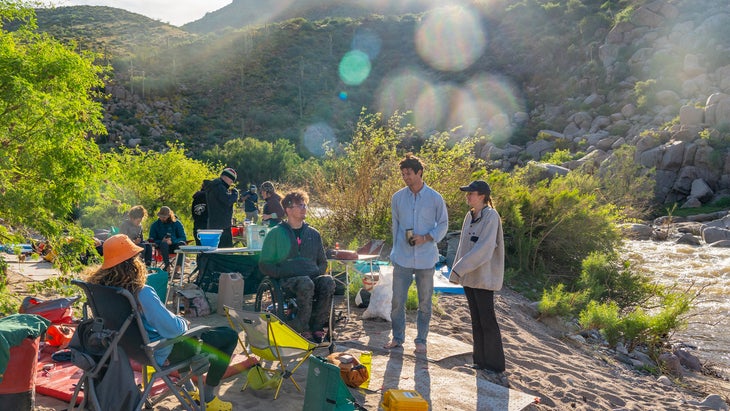
Moreover, we’d set it with the entrance pointing toward the valley walls, unknowingly in a drainage. When it rained, the tent filled up. It wasn’t very good at repelling water, but certainly held it. Our sleeping pads were floating. A box of tampons blew up. My paperback copy of Shogun, 1,200 pages, swelled into a thick round paper fan. We returned one afternoon to find a laughing crew of Japanese climbers taking pictures of the tent, opening it to the flooded interior, immortalizing our terrible campcraft.
These days my preferred method of camping is in a six-person standup tent—you can never go too big— with a pillow and cot, and a vehicle nearby.
Besides not to point your tent into runoff, here’s what I’ve learned.
Need-to-Know Camping Tips
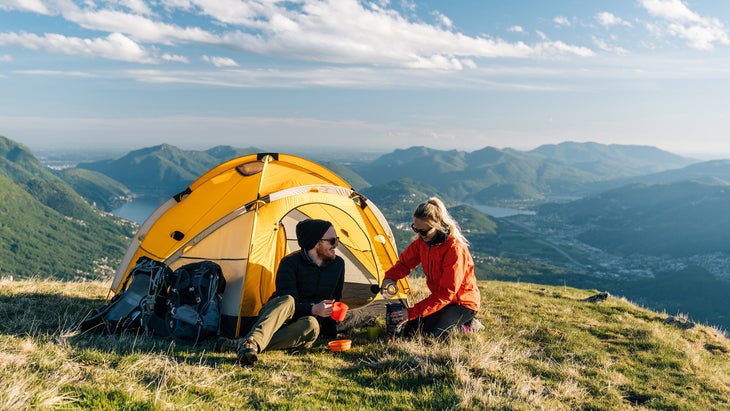
1. Remember mustard. It just seems to be what people forget.
2. It’s also really easy to forget the pot holder for camp cooking in the backcountry, although after burning your fingers you’ll remember.
3. Spring for that extra few degrees of warmth in a sleeping bag. In Patagonia, last November, though my friend Erin VanSickle had brought a sleeping bag rated to 35 degrees, and the nights didn’t get below the upper 30s, she is slim and was cold, sometimes too cold to sleep. She had to put on all her clothes at night, including her sturdy, stiff, crinkling rain jacket. How comfortable does that sound?
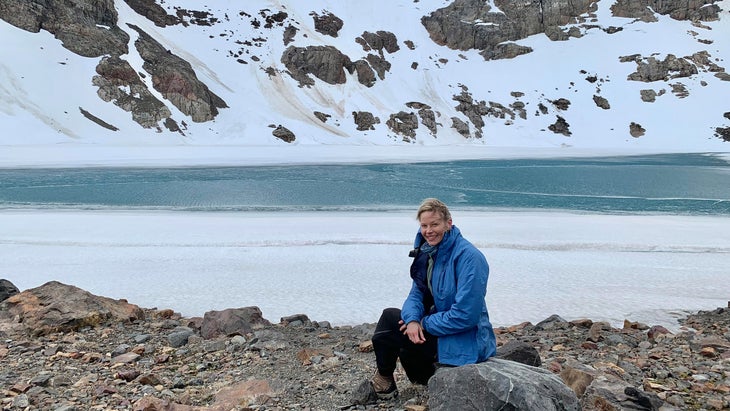
4. Also in cold weather, bring your headlamp, phone, and external charger (the latter two in a Ziploc bag) into your sleeping bag. Cold drains batteries. In Patagonia, my headlamp was dead after one night, and I had to borrow someone’s spare to read in the evenings. After I recharged the headlamp days later, and then put it in the sleeping bag each night, it was fine for the rest of the trip.
5. Paperback books can be ripped into chunks to share if several of you are tent-bound—or, as friends and I once were in Chamonix, cave-bound—in weather for days.
6. Bring a “baby Nalgene” or other half-sized bottle, and at night fill it with hot water to put in the toe of your sleeping bag. (A liter bottle will work, but takes more water and fuel.) You can thank my guide friend Jaime Hanson for this one.
7. If you have an infant or toddler along, bring a few wipes in a baggie into your sleeping bag. (I appreciate that it’s getting pretty crowded in there.) When my husband and I took our then five-month-old to Canyonlands in Utah, the diaper wipes left outside froze brick-solid, which didn’t go over, at all.
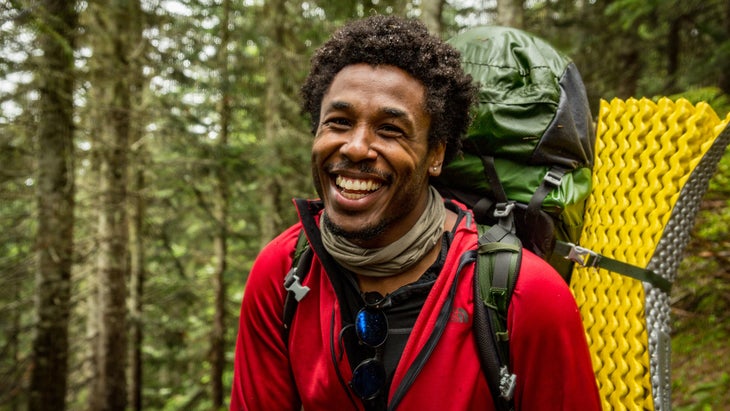
8. Pack a spice kit! Ed Viesturs, Himalayan mountaineer, once told me he eats a spicy dinner before a cold night in his tent “to get the engine going”—giving his body a start on keeping warm. He simply brought spicy dehydrated meals.
9. Bring a small camp towel (extra easy to forget) and a cord for a laundry line.
10. Take earplugs—my friend Jaime gave me a pair connected by a string, a brilliant touch. People nearby snore or worse. Dogs bark, roosters crow. The high schoolers in another site keep partying even after you yell to shut up. (It did help to stomp over and tell them to shut the f’ up.)
11. You will eat more than you think. It’s OK and part of taking care of yourself in cold temps. It’s great. Bring extra food. Lots!
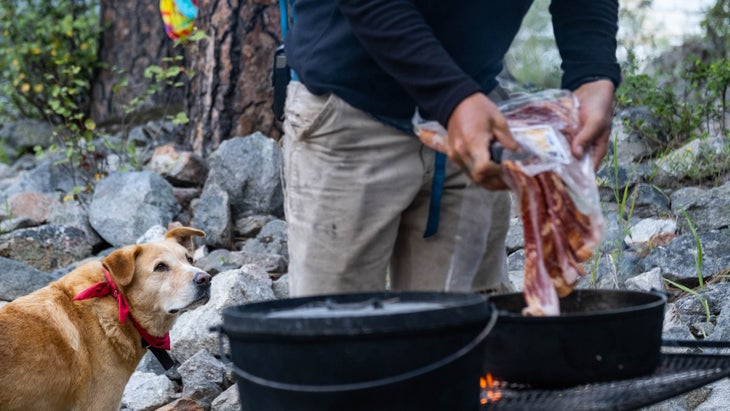
12. You will awaken to birdsong, and it will be heavenly. How about a bird book or app? When I was growing up and our parents took us sailing and snorkeling in southern seas, my father used to bring fish books and at dinner have each child name a new kind we’d seen that day. “If you don’t know its name,” he’d say, “you don’t know the fish.”
13. “Wear sunscreen. If I could offer you only one tip for the future, sunscreen would be it.”—Baz Luhrmann music video, from a Chicago Tribune column by Mary Schmich. Enough said.
14. Hats. A wool beanie is your best friend for sleeping in the cold, and ball caps or other hats fend off sun (see no. 13) and sometimes other things. Once when I was bivvied on a flat boulder in Rocky Mountain National Park, a mouse kept running in and chewing on my hair, waking me up. I groped around and pulled a pair of tights onto my head. I will never forget my now spouse’s face at daylight when I sat up, the tights legs trailing down from my head like a jester’s cap.
15. Everyone, every age, loves s’mores.
Alison Osius, a lifelong climber and hiker and a travel editor at Outside, has camped across North America; in pouring rain in the Scottish Highlands and less rain in England and Wales; in sun-drenched but also drenched France; and in the cold and wind in Patagonia. Only once has she willingly camped in snow.
